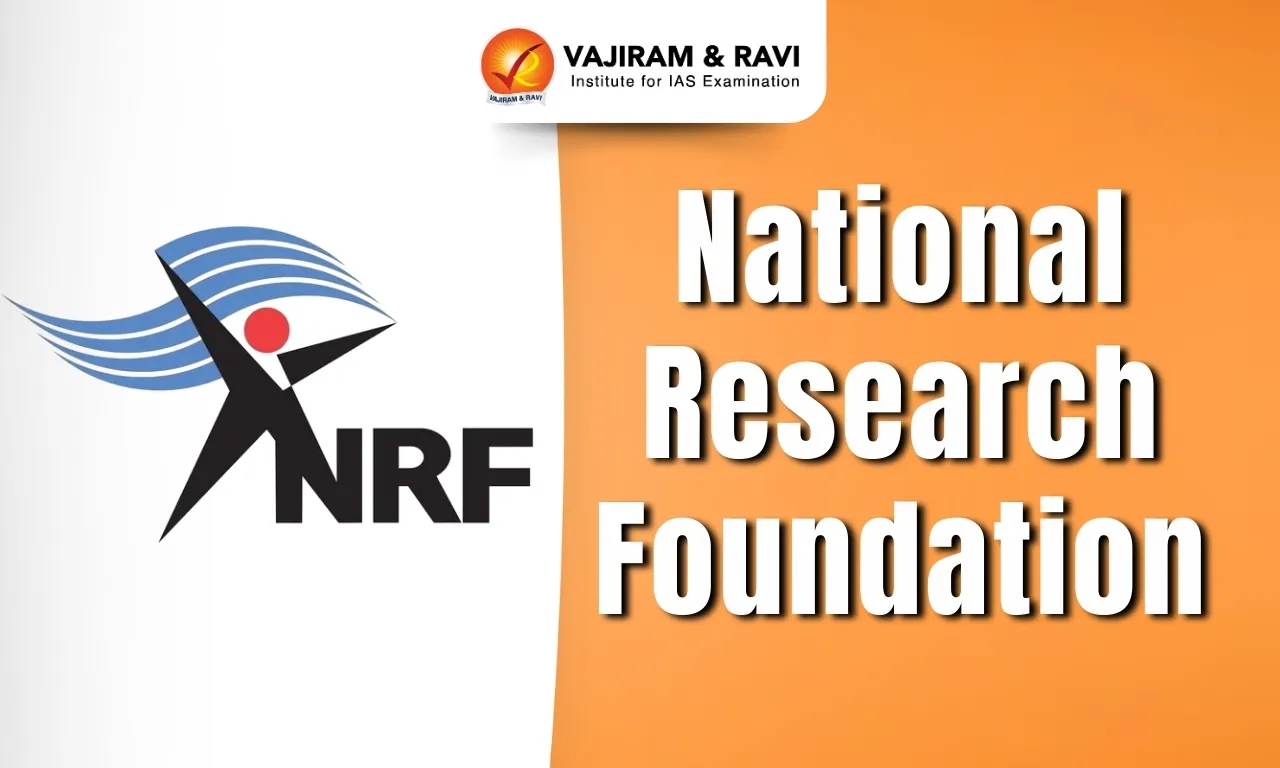The Anusandhan National Research Foundationis an apex body to provide “high-level strategic direction” to scientific research in the country. The National Research Foundation will play a pivotal role in seeding, nurturing and promoting research, innovation and development across universities, colleges, research institutions, and R&D laboratories.
Anusandhan National Research Foundation Act, 2023
The Anusandhan National Research Foundation Act of 2023 provides for the establishment of the Anusandhan National Research Foundation (NRF).
- It also repealed the Science and Engineering Research Board (SERB) established by an act of Parliament in 2008 and subsumed it into NRF.
- NRF, as an apex body, aims to provide “high-level strategic direction for research, innovation and entrepreneurship”, and enhance “India’s national research infrastructure, knowledge enterprise, and innovation potential, for scientific pursuit”.
What is National Research Foundation?
In 2005, the Science Advisory Council to the Prime Minister recommended the formation of a National Science and Engineering Research Foundation. It was approved by the then PM Manmohan Singh. In 2008, it was renamed the Science and Engineering Research Board (SERB).
The National Research Foundation (NRF), an apex body to provide high-level strategic direction of scientific research in the country in accordance with the recommendations of the National Education Policy (NEP), will be established at a cost of 50,000 crore over the period 2023-28.
- Goals: To increase private sector contributions to research in India and to ensure that a larger portion of government funds go to state universities and colleges.
- The Department of Science and Technology (DST) will be NRF's administrative department.
Functions of National Research Foundation
National Research Foundation will provide strategic direction for research, innovation, and entrepreneurship in the fields of natural sciences, engineering and technology, environmental and earth sciences, health and agriculture, and scientific and technological interfaces of humanities and social sciences.
Functions of NRF include:
- Preparing the roadmap for short, medium, and long-term research and development.
- Facilitating and funding the expansion of Research and Development and related infrastructure in universities, colleges, and research institutions.
- Funding competitive peer-reviewed grant proposals to eligible individuals.
- Assisting in the transformation of research into capital-intensive technology.
- Enhancing India's role and engagement in significant national and global areas.
- Encouraging private and public sector entities to invest in the foundation.
- Carry out annual surveys of scientific research, outcomes, and spending.
Organisational Structure of National Research Foundation
| Governing Board | Executive Council | |
| President/ Chairperson | Prime Minister of India | Principal Scientific Advisor |
| Other Members |
- Union Minister of Science and Technology and Union Minister of Education as Vice Presidents - Principal Scientific Advisor as Member Secretary. - Secretaries to the Departments of Science and Technology, Biotechnology, and Scientific and Industrial Research. - Member of the NITI Aayog dealing with science and technology. - The Board's President may appoint or nominate additional members from business organizations, social sciences, and humanities etc. |
- Secretaries to various departments of the central government including:
|
| Functions |
- Governed the administrative department of NRF. - Provide policy guidance to the Foundation and oversee implementation. |
- lmplement the objectives of the Foundation based on the policy direction and guidance provided by the Governing Board. - Examining applications for financial aid, - Developing a budget and managing its accounts. |
Need for National Research Foundation
- Less investment in research: India’s Gross Expenditure on Research and Development (GERD) stagnated at about 0.7 percent of GDP, which is less as compared to the 2% of the global benchmark.
- A significant infusion of funding, steered by a clear implementation strategy, is required for India to become a science leader.
- Less contribution by private sector: 52% of GERD in India is by the government which is substantially higher than in the US (10%), Germany (13%), China (15%). To bridge this gap, the ANRF-2023 Act plans to seek significant private-sector contributions.
- Challenges to India’s research and development capacity: NRF can be a viable tool to address challenges to India’s research and development capacity.
- For example, a share of the funds should be targeted toward building scientific research capacity in universities and semi-urban areas.
- Impact of Brain drain: Lower spending on R&D, and less innovative opportunities may force young talents to move to better terrains. India must strive to optimally use its pool of talent.
Significance of the National Research Foundation
- Democratisation of science funding: NRF will prioritize funding for projects in outlying, rural, and semi-urban areas, which are underserved and rarely receive funding for science projects.
- Widen the area of research: The NRF would support research in areas other than natural sciences and engineering, such as social sciences, arts, and humanities.
- Provides an efficient and integrated management system: For the implementation of missions such as the supercomputer mission or the quantum mission.
- Enhance collaboration: The NRF will establish collaborations between business, academia, government agencies, and research institutions, and will dig into the financial resources of the private sector to ensure a financially viable research ecosystem.
Limitations of the National Research Foundation
- Less funding by government: An amount of Rs 50,000 crore has been earmarked for priority areas in research over 2023-2028. It is stated that approximately 70% will be raised from the private sector. There is no mechanism in the NRF Act to ensure this support.
- Enhance Centralisation: The Bill does not follow the principle of cooperative federalism and has no place for the representatives of state governments in the decision-making structure.
- Exclusion of important stakeholders: The act does not enunciate the role and contribution of the relevant actors operating under the economic and social ministries in the NRF decision-making structures.
- No role of the Central Public Sector Enterprises (CPSEs) in decision making: The CPSEs should play a pivotal role in being vehicles for the transfer of R&D benefits from academic institutions to application to strategic areas of manufacturing.
Last updated on January, 2026
→ Check out the latest UPSC Syllabus 2026 here.
→ Join Vajiram & Ravi’s Interview Guidance Programme for expert help to crack your final UPSC stage.
→ UPSC Mains Result 2025 is now out.
→ UPSC Notification 2026 is scheduled to be released on January 14, 2026.
→ UPSC Calendar 2026 is released on 15th May, 2025.
→ UPSC Prelims 2026 will be conducted on 24th May, 2026 & UPSC Mains 2026 will be conducted on 21st August 2026.
→ The UPSC Selection Process is of 3 stages-Prelims, Mains and Interview.
→ Prepare effectively with Vajiram & Ravi’s UPSC Prelims Test Series 2026 featuring full-length mock tests, detailed solutions, and performance analysis.
→ Enroll in Vajiram & Ravi’s UPSC Mains Test Series 2026 for structured answer writing practice, expert evaluation, and exam-oriented feedback.
→ Join Vajiram & Ravi’s Best UPSC Mentorship Program for personalized guidance, strategy planning, and one-to-one support from experienced mentors.
→ UPSC Result 2024 is released with latest UPSC Marksheet 2024. Check Now!
→ UPSC Toppers List 2024 is released now. Shakti Dubey is UPSC AIR 1 2024 Topper.
→ Also check Best UPSC Coaching in India

















